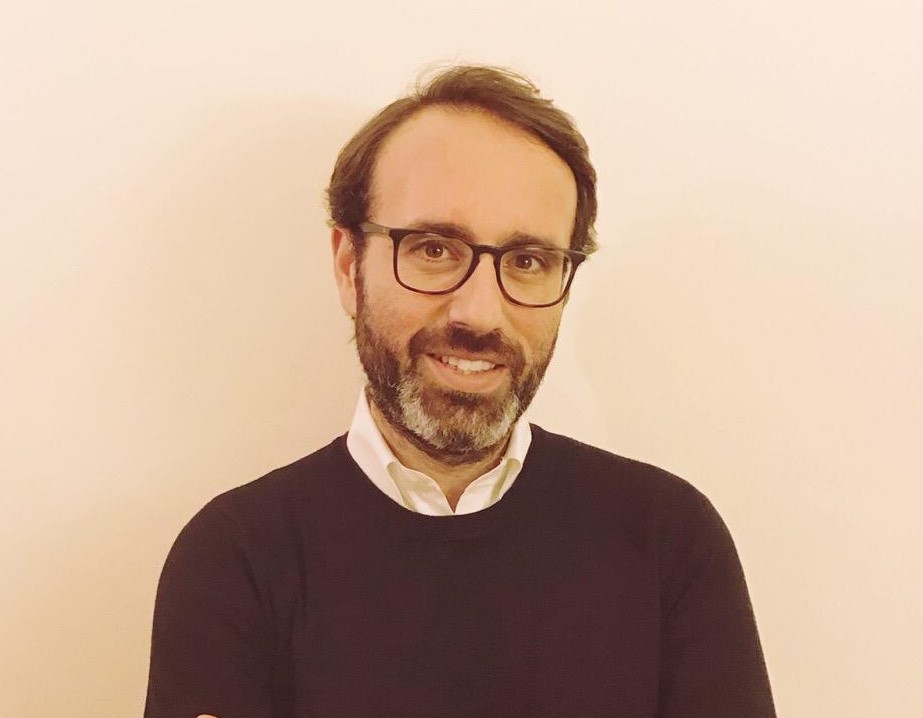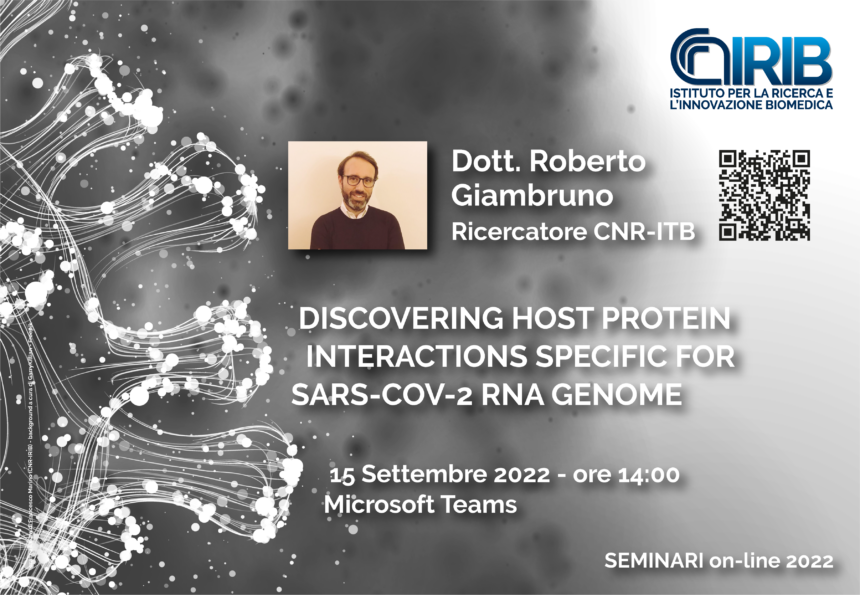
Dott. Roberto Giambruno
Dott. Roberto Giambruno
Ricercatore CNR-ITB
Istituto di Tecnologie Biomediche
Milano
Discovering host protein interactions specific for SARS-CoV-2 RNA genome
15/09/2022 – ore 14:00
Abstract:
SARS-CoV-2 is a positive single-stranded RNA virus that interacts with proteins of infected cells at different stages of its life cycle. These interactions are necessary for the host to recognize and block the replication of the virus. Yet, if cells fail to block SARS-CoV-2, host proteins are recruited to translate, transcribe and replicate the genetic material of the virus. To identify the host proteins that bind to SARS-CoV-2 RNA, we adopted the RNA-Protein Interaction Detection coupled to Mass Spectrometry (RaPID-MS) technology, which allows the purification and identification by MS-based proteomics of the proteins associated with a specific RNA of interest expressed in mammalian cells. We specifically investigated proteins associated with the 5′ and 3′ end regions of SARS-CoV-2 RNA. As associations might involve non-physical protein-RNA interactions, we defined a set of reliable protein-RNA interactions by exploiting the predictive power of the catRAPID algorithm that assesses the direct binding potential of proteins to a given RNA region. Among these specific SARS-CoV-2 RNA end interactors, we identified the pseudouridine synthase PUS7 that binds to both 5′ and 3′ ends of viral RNA, which harbor the canonical consensus sequence modified by PUS7. We corroborated our results through SARS-CoV-2 RNA analysis by nanopore direct RNA sequencing. Indeed, these PUS7 consensus regions were found highly modified on viral RNAs, as demonstrated by ionic current features that are significantly different compared to the unmodified in vitro transcribed RNA. Overall, our data map the specific host protein interactions of SARS-CoV-2 RNA and point to a role for cellular pseudouridine synthases and the post-transcriptional pseudouridine modifications in the viral life cycle.
INFO : seminari.irib@irib.cnr.it

